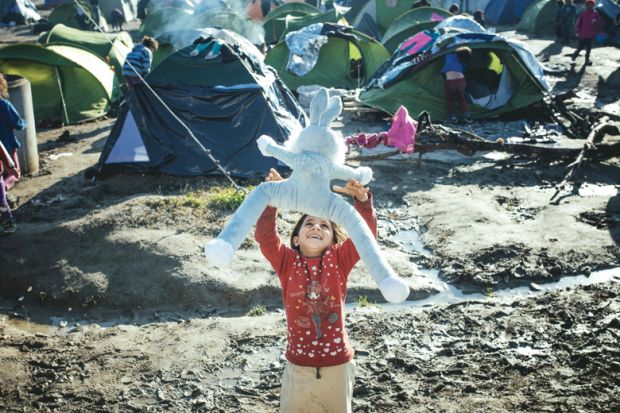What can academics and artists do to help ensure that refugee voices are heard?
That was the central theme of an event incorporating film, performances and presentations, Engaging Refugee Narratives, organised last week by the department of anthropology at University College London.
The goal, explained Ruth Mandel, reader in anthropology, was to explore “what anthropology can offer to the refugee situation, today and in general, and how it can relate to the arts”. Crucial to this was going beyond “depictions of refugees [which] portray them as voiceless victims, the utterly abject, and, crucially, devoid of cultural specificity”. What were needed instead were “responses that express creative resilience” and that “allow refugees to express their own agency”.
Academic experts took up these themes in different ways.
Evthymios Papataxiarchis, professor of social anthropology at the University of the Aegean on Lesbos, considered a photograph known as “the three grannies and the refugee baby”, which had been taken in the Lesbos village of Skala Sykamias, the entry point to Europe for 200,000 refugees in 2015.
After the photograph went viral around the world, Militsa Kamvisi – the “granny” who happened to be holding a bottle of milk – had been photographed with the president of Greece and even nominated for the Nobel Peace Prize.
Some of the commentary, argued Professor Papataxiarchis, had more or less claimed that “Greek mothers have generosity in their genes”. Such images could only “simplify an otherwise very complex process” and ran the risk of “focusing on aesthetics and even exploiting local people”.
Activist and academic Maria Pisani, lecturer in youth and community studies at the University of Malta, described the work of Integra, an NGO she set up to “facilitate the space for marginalised individuals and groups to be listened to”.
Although they had organised a number of cultural projects that had been successful in breaking down stereotypes about refugees and encouraging dialogue, Dr Pisani said she often had a sense of forever speaking to “the same four cats”, as a Maltese proverb puts it, who were already committed to the cause. The key question – “Has the illegalised body the right to speak to power?” – could only be addressed through “political and legal action”.
Later sessions heard from arts practitioners who have worked in Northern Ireland, Norway and the Netherlands. There were also live and filmed performances by theatre groups including those working with refugee women in Lebanon and young Afghan men in Britain.




